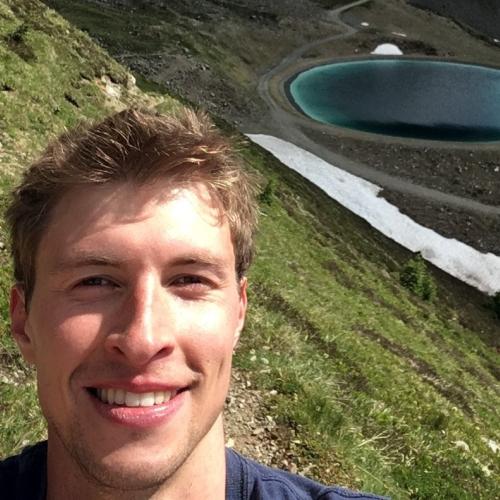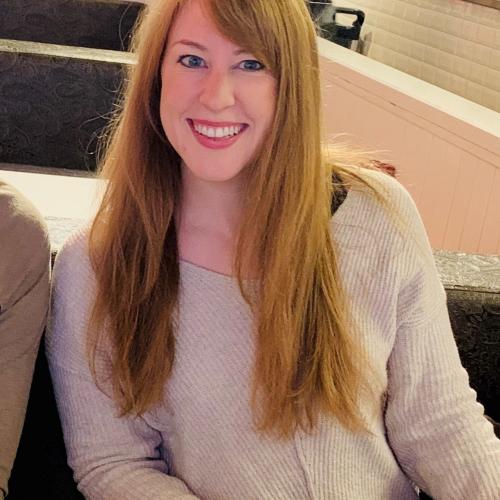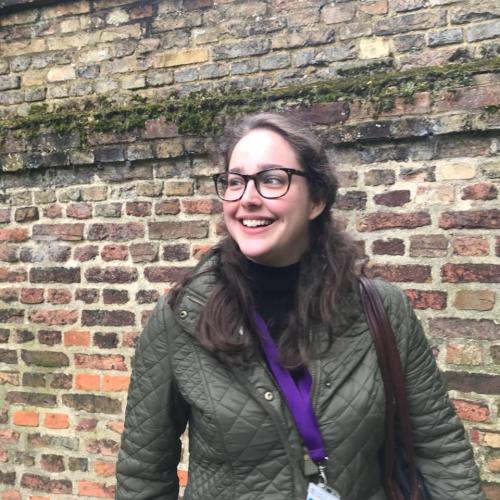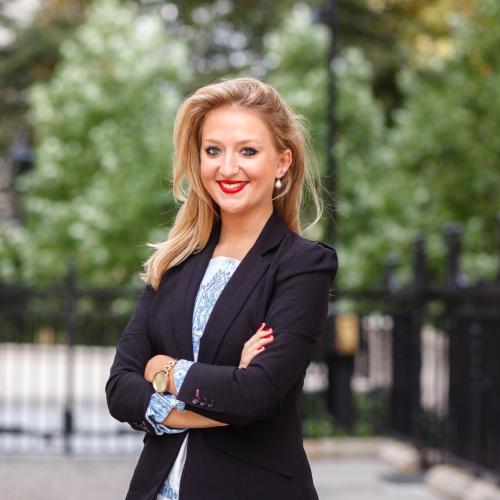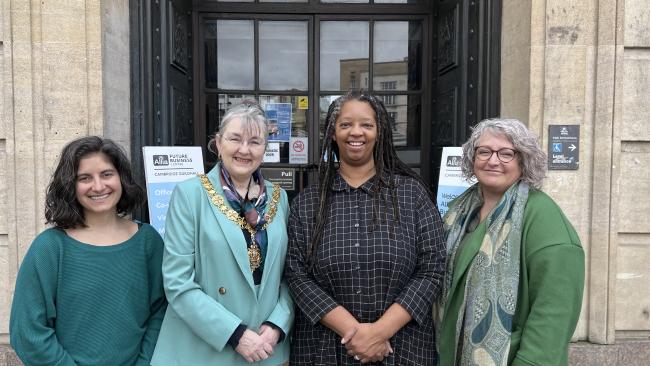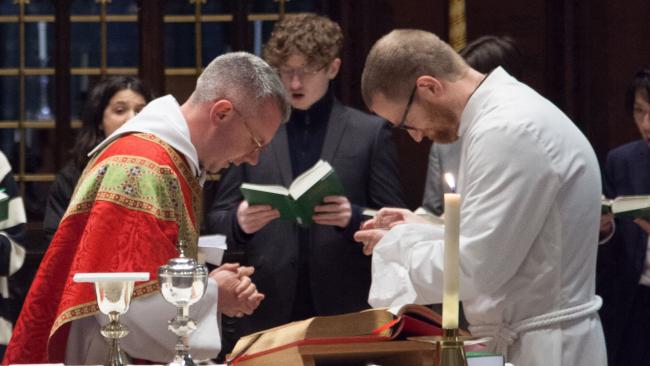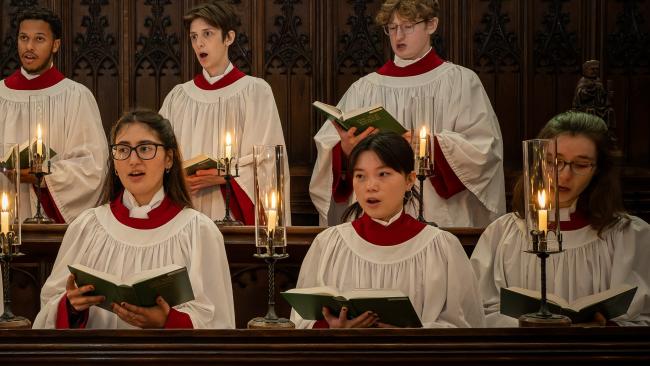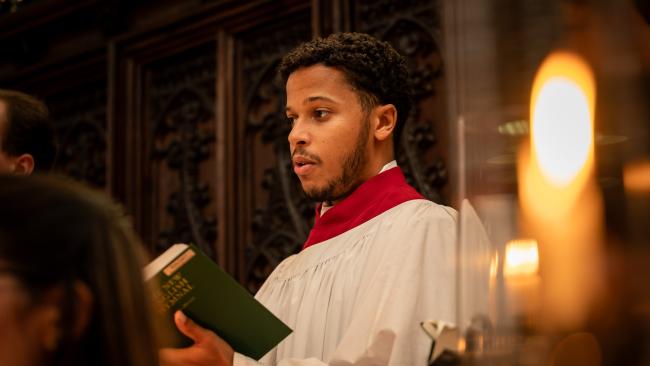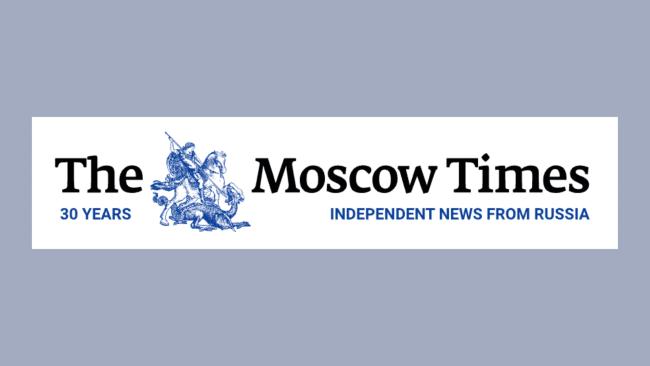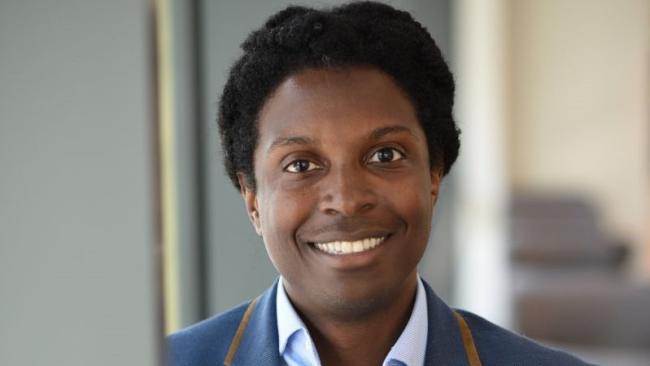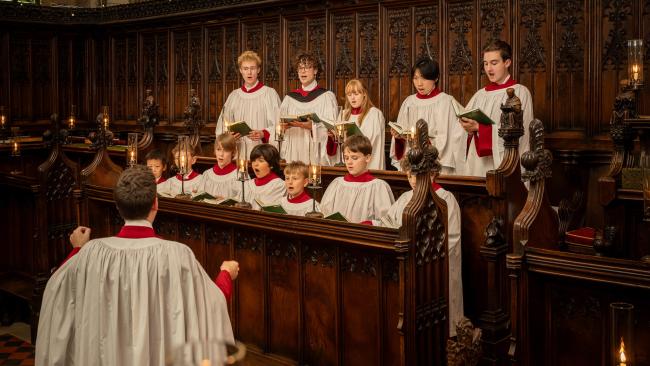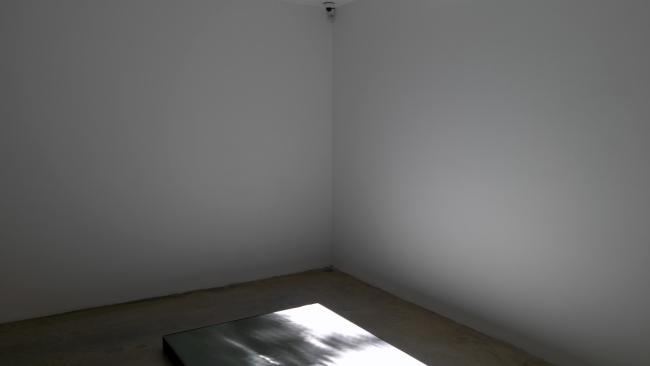
Miroslaw Balka
Works exhibited: 690×190×102, T. Turn, Primitive.
Although two of Balka’s works on show in Jesus College are video installations, it is important to stress that they are sculptures rather than films. We are used to viewing the immaterial image and taking it for granted, but in these installations we cannot escape the materiality either of the projection or of the conditions in which the images were gathered.
Primitive is perhaps the most extreme challenge to our expectations of film, in that the sound and image loop it repeats so exhaustively is only three seconds long. The image quality is deliberately impoverished, deriving from Balka’s video recording of a television transmission.
The three second clip represents a tiny fragment of one of the longest films of the 20th century, Claude Lanzmann’s Shoah, which details Nazi crimes against concentration camp victims during the Second World War. The face and voice are of Franz Suchomel, SS-Unterscharführer at Treblinka. Unaware of being recorded, Suchomel speaks of his enthusiasm for the methods of extermination at Treblinka, which he describes as a primitive but effective production line of death: ‘primitiv, zwar, primitiv’.
In this one man and his matter of fact relish for atrocity, Balka glimpses a metonym for the spatial and temporal structures of cruelty during the Holocaust. By looping this moment into infinity, Balka forces us to ask whether this historical episode is truly over or not.
With T. Turn, the self effacing neutrality of the projection screen is exchanged for a relay system where the image is bounced off a small mirror and splayed onto a salt filled metal tray that distorts and diffuses it, giving it a literal graininess. The image we see is unsteady, an impression of a sweeping gaze that is difficult to read; the movement of the handheld camera recording the image is subject to an implacable rotation that threatens to spin out of control.
What we are being asked to read is not so much what the camera sees but the evidence of what the artist’s body experienced in the act of recording the images; we can sense the effort of holding the camera up, of maintaining balance, of having to keep going without getting dizzy.
Perhaps increasingly, Balka’s sculpture has sought out the means of grounding his visual practice in the feel of things. His works seem to want to communicate the truth about bodily experience in a continuum that runs from the contingencies of time and place in which the work was conceived and created to the physical conditions in which it is encountered and engaged with by the viewer.
The recent sculptures that have not been organized around video technology have focused on junction points between the body and the built environment, asking us to think again, or to think for the first time, about the way we devise and control our pathways through the world.
Like his Polish compatriot Stefan Themerson, who describes walls, ceilings and floors in his novel Bayamus (1949) as if encountering them for the first time, Balka offers us doorways, corridors, ramps, leading nowhere, so as to force us to reflect on the states of mind and feeling that each of these architectural elements can create in us, and to consider both the proper and improper uses to which they have been – or may yet be – put.
The formal severity of these works is in proportion to the fundamental challenge they offer to the viewer as inhabitant of a body with specific human capacities for temporal and spatial orientation.
